![]()
![]()
![]()
Use LEFT and RIGHT arrow keys to navigate between flashcards;
Use UP and DOWN arrow keys to flip the card;
H to show hint;
A reads text to speech;
55 Cards in this Set
- Front
- Back
- 3rd side (hint)
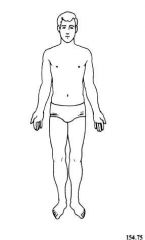
What position is this?
|
Anatomical
|
|
|
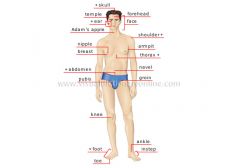
What view of the body is this?
|
Anterior
|
|
|
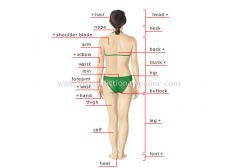
What view of the body is this?
|
posterior
|
|
|
|
front of the body or closer to the front of the body
|
anterior
|
|
|
|
back of the body or position closer to the back
|
posterior
|
|
|
|
synonym for anterior
|
ventral
|
|
|
|
synonym for posterior
|
dorsal
|
|
|
|
away from the trunk
|
distal
|
|
|
|
toward the trunk
|
proximal
|
|
|
|
part that is above another or upper surface of an organ
|
superior
|
|
|
|
part below another or lower surface of an organ
|
inferior
|
|
|
|
position or structure close of the head
|
cranial
or cephalad |
|
|
|
position or structure closer to the feet
|
caudal
(meaning tail) |
|
|
|
terms mostly used for four-legged animals
|
cranial
caudal ventral dorsal |
|
|
|
words (2) used to describe depth
|
superficial
deep |
|
|
|
motion in a straight line from one location to another
same distance, direction, and time |
Linear/translatory motion
|
|
|
|
if motion occurs in a straight line
|
reticiliniear motion
|
|
|
|
if motion occurs in a curved path
|
curvilinear motion
|
|
|
|
What motion is this?
diver, ball, javelin thrown across a field, earth's orbit around the sun |
curvilinear motion
|
|
|
|
child sledding down hill
What motion is this? |
reticilinear motion
|
|
|
|
movement of an object around a fixed point
|
angular/rotatory motion
|
|
|
|
all the parts of an object move through the same angle, direction, and time.
However, not the same distance. |
angular motion
|
|
|
|
What type of motion is this?
flexion of the elbow |
angular motion
|
|
|
|
Is it uncommon to see both types of movement occurring at the same time?
|
the entire object moving in a linear fashion and the individual parts moving in an angular fashion.
|
|
|
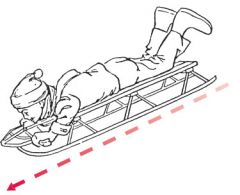
what type of motion?
|
reticilinear motion
|
|
|
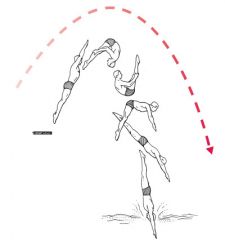
What type of motion?
|
curvilinear motion
|
|
|
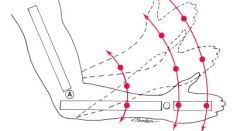
What type of motion is this?
|
Angular motion
|
Around a fixed point
same time, angle, and direction |
|

What types of motion are represented?
|
linear and angular
Linear: wheelchair angular: arm |
|
|

What 3 movements are represented?
|
1. flexion
2. extension 3.hyperextension |
|
|
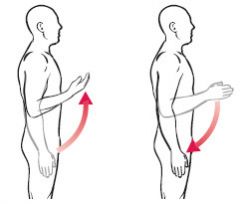
What movements are represented?
|
1. flexion
2. extension |
|
|
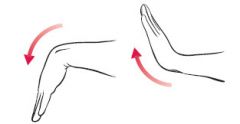
What movement is represented here?
|
1.palmar flexion
2. dorsiflexion |
|
|

What type of movement is represented?
|
1. plantar flexion
2. dorsiflexion |
|
|

What type of movement is represented?
|
1. shoulder abduction
2. shoulder adduction |
|
|

What type of movement is represented?
|
1. shoulder horizontal abduction
2. shoulder horizontal adduction |
|
|

What type of movement is represented?
|
1. trunk right lateral rotation
2. trunk left lateral rotation |
|
|

What type of movement is represented?
|
1. neck rotation to right
2. neck rotation to left |
|
|
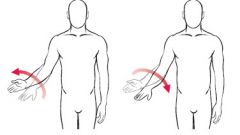
What type of movement is represented?
|
1. forearm supination
2. forearm pronation |
|
|
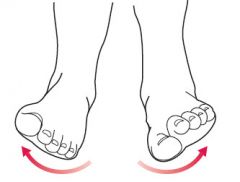
What type of movement is represented?
|
1. inversion
2. eversion |
|
|
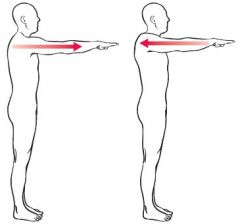
What type of movement is represented?
|
1. protraction
2. retraction |
|
|
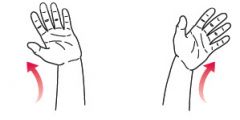
What type of movement is represented?
|
1.Wrist radial deviation
2. wrist ulnar deviation |
|
|
|
freely movable joints
|
synovial joints
|
|
|
|
movement of bones around a joint axis
|
osteokinematics
|
|
|
|
relationship of joint surface movement
|
arthrokinematics
|
|
|
|
bending movement of one bone on another, goes from 180 toward 0 degrees
causes decrease in joint angle |
flexion
|
|
|
|
How many degrees is a full extension? What is the one exception to this rule?
|
180 degrees, elbow flexion starts in anatomical position (0 degrees) and moves toward 180 degrees
|
|
|
|
straightening movement of one bone from another causing an increase of the joint angle
|
extension
|
|
|
|
continuation of extension beyond the anatomical position
|
hyperextension
|
|
|
|
flexion at the wrist
|
palmar flexion
|
|
|
|
flexion at the ankle
|
plantar flexion
|
|
|
|
extension of the wrist and ankle joints
|
dorsiflexion
|
|
|
|
movement away from the midline of the body
|
abduction
|
|
|
|
movement toward the midline
|
adduction
|
|
|
|
Fingers/toes are the ___________ to the abduction/adduction rules. What is the reference point for the fingers?
|
exception, middle finger
|
|
|
|
movement away from the middle finger
movement toward the middle finger |
finger abduction, finger adduction
|
|
|
|
Point of reference for the toes
|
2nd toe
|
|

